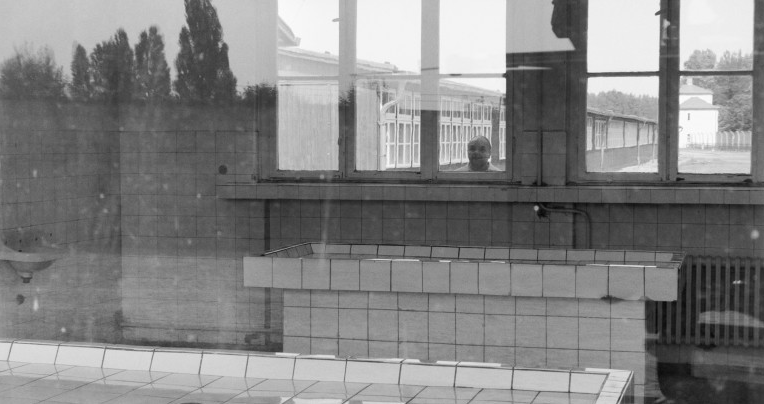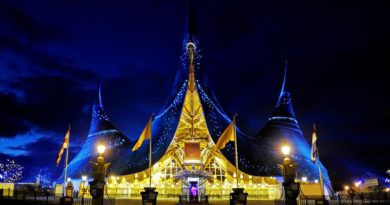« Austerlitz », a Documentary by Sergei Loznitsa on Tanato-Tourism
“What attracts people to stand in front of the gate and take a picture with the sign Arbeit macht frei behind them? Or in front of the crematoriums where it’s just a black, empty hole. Why? This is something I haven’t been able to understand. That’s why I made this film, all my films in fact. To ask questions.”
At fifty-two, the Ukrainian director Sergei Loznitsa looks boyish, his pale blue eyes peering at the audience for a moment before giving an answer, elaborating his thoughts, stopping half-way to say something in Russian to his aid, a word that has escaped him, then re-taking the flow of the conversation with impetus, going deeper into his universe.
Loznitsa was at Bozar Centre for Fine Arts on Friday 16th to present his latest documentary Austerlitz. The event was organized by the Goethe Institute, Bozar, Cinematek and the DOK Leipzig Documentary Film Festival. Austerlitz is a black and white film shot at two concentration camps in Germany, Sachsenhausen and Dachau, both relatively close to big cities, Berlin and Munich respectively. There is no scripted dialogue or voice-over, just the sounds from people visiting the grounds of the camps, the gravel under their feet as they walk from barracks to barracks, guides speaking in Spanish, English, German, all a mix of words that become, in the words of Loznitsa, another Tower of Babel.

“I wanted to depict what in these days has become known as tanato-tourism. The desire people have to touch death from a safe distance. And as I did that, I found myself facing a difficult question: how do you present this information without incurring in profanation, because these places are, after all, massive graveyards.”
To make the film, Loznitsa collected seventy five hours of shooting and spent three months selecting what would become the one-and-a-half hour documentary.
“The sound is very important,” he said. “Since I didn’t have any narrative, I knew I needed to work a lot with the sound to create tension. The audience is used to classic dramaturgy, that’s how it is in commercial films. But you can play with sounds and frequencies to achieve a similar effect. It is very interesting.”
The name Austerlitz was borrowed from the 2001 novel by the German writer W.G. Sebald, which dealt with the life of a man who grows up in Wales, Jacques Austerlitz, without knowing that he has a past in the Czech Republic. As a child, Austerlitz had been sent by his parents to the UK in a Kindertrasnport to avoid death during the war. The Holocaust was a theme that haunted Sebald, a subject that he went back to time and again throughout his career trying to discern how the human being creates memory, how they are preserved on the outside world, objects and places, as well as in our minds.
“The name for the documentary came to me in a flash,” Loznitsa said. “From the very first moment I knew that was the name. And you know, it’s strange, because now when people ask me why, I can articulate a wide array of reasons. But back then I just knew it had to be Austerlitz.”
The film begins with the crowds entering the memorial, taking pictures of themselves at the gate, looking at the maps of the site, and it ends with the same people exiting the grounds, the iron gate behind them. In documentary film making there have been moments, the sweetest moments, when Loznitsa has been able to find out things about himself through the eyes of the others.
“That’s what I call the ambrosia of documentary,” he said. “You begin to shoot expecting something and then you are surprised, pleasantly surprised, because a truth has been revealed to you. That’s the whole point why I work with film. It’s a sort of anthropologic study about the other, about myself. About how human beings behave.”



